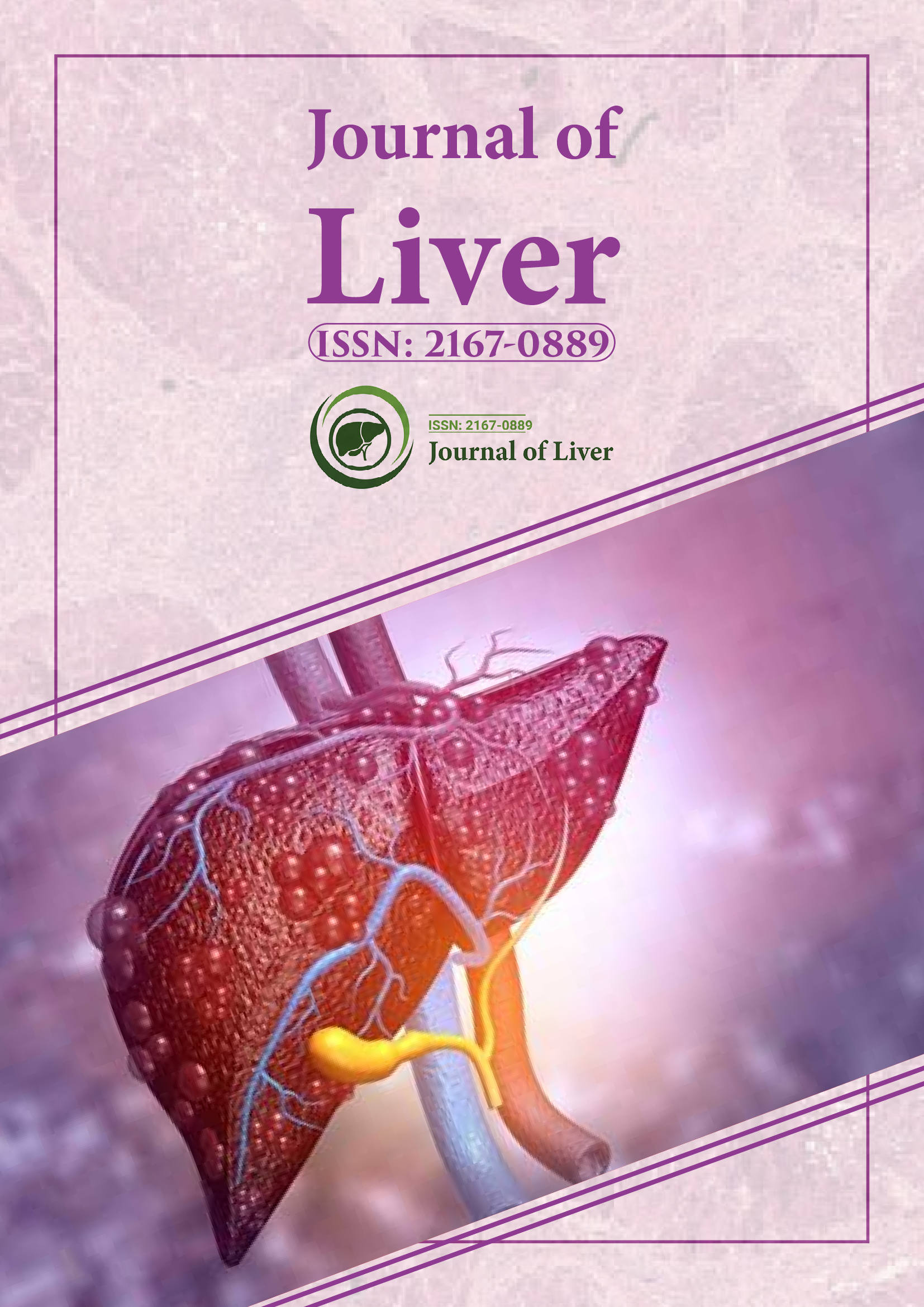Indexed In
- Open J Gate
- Genamics JournalSeek
- Academic Keys
- RefSeek
- Hamdard University
- EBSCO A-Z
- OCLC- WorldCat
- Publons
- Geneva Foundation for Medical Education and Research
- Google Scholar
Useful Links
Share This Page
Journal Flyer

Open Access Journals
- Agri and Aquaculture
- Biochemistry
- Bioinformatics & Systems Biology
- Business & Management
- Chemistry
- Clinical Sciences
- Engineering
- Food & Nutrition
- General Science
- Genetics & Molecular Biology
- Immunology & Microbiology
- Medical Sciences
- Neuroscience & Psychology
- Nursing & Health Care
- Pharmaceutical Sciences
Perspective - (2022) Volume 11, Issue 1
Hepatic Biliary Tract Symptoms of Sickle Cell Anemia
Dina Halegoua*Received: 07-Jan-2022, Manuscript No. jlr-22-129; Editor assigned: 11-Jan-2022, Pre QC No. jlr-22-129(PQ); Reviewed: 21-Jan-2022, QC No. jlr-22-129; Revised: 24-Jan-2022, Manuscript No. jlr-22-129; Published: 28-Jan-2022, DOI: 10.35248/2167-0889.22.11.129
Description
Sickle cell disease is a comprehensive term that includes a condition in which the hemoglobin S mutation is present in at least one beta chain. Hemoglobin A, also known as normal adult hemoglobin, is composed of two alpha chains, two beta chains and small amounts of HbA2 and HF. If there is a point mutation in the beta chain in which valine is replaced with glutamate at the 6th position, this leads to the formation of hemoglobin S. HbS has a sticky patch at the valine substitution site that binds to other HbS molecules to form a long-chain polymer, especially when deoxidized, causing erythrocyte strain and sickle cell disease and hemolytic leads. In the oxygenated state, complementary receptor sites are masked and cannot bind to and polymerize to deoxygenated HbS, but leave a sticky patch. Therefore, when oxygenated, sickling can be prevented despite the high HbS concentration. After recurrent illness, a subsequent multifaceted effect include changes in the structure and function of the red blood cell membrane, impaired volume control of Red Blood Cells (RBC), increased attachment of RBC to the vascular endothelium, and dysregulation of vascular activity, and includes inflammation that ultimately leads to vascular obstruction and hemolysis. If the mutation affects only one β-globin chain and the other is normal, it is said to have a sickle cell trait. It is a relatively benign carrier state and lacks the characteristics of the classical phenotype of Sickle Cell Disease (SCD). If both β chains carry the HbS mutation, the patient exhibits phenotypic characteristics of SCD. These include recurrent painful crisis, anemia, infections, stroke, organ failure, various complications and premature death due to end organ damage.
Hepatobiliary Manifestations of Sickle Cell Disease
Patients with SCD can suffer from acute or chronic viral hepatitis. Patients with SCD are exposed to risk factors such as multiple blood transfusions, which increases the prevalence of both acute and chronic viral hepatitis. The prevalence of viral hepatitis in these patients also depends on factors such as the local prevalence of chronic viral hepatitis and blood transfusion protocols and vaccination practices. Several studies have shown that a persistent asymptomatic increase in ALT / AST in the absence of sickle cell disease is generally associated with chronic hepatitis on liver biopsy.
Over Load of Iron Transplantation
Hemosiderosis due to iron overload due to recurrent blood transfusion is not uncommon in SCD and can lead to cirrhosis. This is the result of the accumulation of transfused iron, increased gastrointestinal iron absorption due to intense erythropoiesis, and iron deposition secondary to continuous hemolysis. Saturation of transferrin due to excess circulating iron leads to the formation of Reactive Oxygen Species (ROS) such as hydroxyl radicals. Excess iron tends to deposit in the liver parenchyma, endocrine organs, and cardiomyocytes, resulting in end organ damage due to ROS- treated lipid peroxidation.
Gallstone Disease
Most patients with gallstones are asymptomatic. It can cause a history of intermittent abdominal pain associated with fatty foods. It is often overlooked unless the patient presents with acute cholecystitis or choledocholithiasis.
Acute cholecystitis
The symptoms of acute cholecystitis are similar to those of the general population. Common symptoms are abdominal pain, nausea, vomiting, fever, and / or jaundice. In patients with SCD, it is often difficult to distinguish from sickle cell disease of the liver. Both imaging and pattern recognition of acute liver crisis can help distinguish between these two entities in such cases
Choledocholithiasis
The incidence of both asymptomatic and symptomatic choledocholithiasis (CDL) in SCD ranges from 19% to 26%, comparable to the incidence of cholesterol gallstone patients. However, bilirubin stones are often asymptomatic because they are small in size and brittle, causing only mild obstruction. However, if severe obstruction persists, pain and jaundice in the upper right or upper abdomen may be present. The presence of fever in this situation may indicate cholangitis and requires acute biliary decompression.
Treatment
Whole cystectomy is the most common surgical procedure in SCD patients, accounting for about 40% of SC patients. It should be performed in patients with symptomatic gallstones that are difficult to distinguish from sickle cell liver disease. However, it has become a controversial practice in asymptomatic patients. Some authors consider the complications of emergency surgery, the lack of a clinical correlation between histologically chronic cholecystitis and clinical manifestations, and ultimately simplify medical management by eliminating gallstones as a diagnostic option. In consideration of this, we advocate early cholecystectomy. In contrast, other authors believe that patients may not develop symptomatic biliary tract disease and therefore the risk of prophylactic cholecystectomy may outweigh its benefits.
Citation: Halegoua D (2022) Hepatic Biliary Tract Symptoms of Sickle Cell Anemia. J Liver. 11:129.
Copyright: © 2022 Halegoua D. This is an open-access article distributed under the terms of the Creative Commons Attribution License, which permits unrestricted use, distribution, and reproduction in any medium, provided the original author and source are credited.
